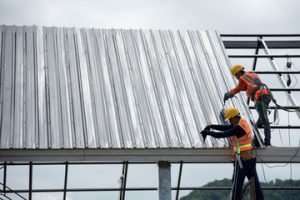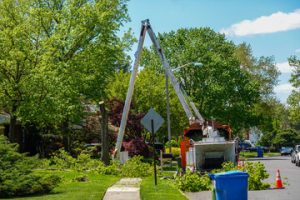A roof protects more than a home—it preserves comfort and safety. Yet when damage strikes, cost becomes the biggest concern. Affordable Roof Repair In Helena has transformed from patching cracks to engineering smarter, lasting solutions. The modern approach blends innovation, practicality, and awareness of materials to achieve strength without excess spending.

Today’s homeowners look beyond traditional fixes. The trend is shifting toward resourceful restoration rather than full replacement. This mindset saves not just money but materials, making repair both economical and sustainable. The goal is not to rebuild but to reinforce what already works.
Affordable roof repair now starts with early detection. Hidden leaks, loose shingles, or subtle corrosion often lead to major expenses if ignored. Smart inspections powered by new diagnostic tools prevent that. Identifying weak spots early reduces both labor and material costs.
Minimal intervention methods are reshaping the industry. Rather than removing entire sections, contractors now focus on precision sealing and targeted layering. This reduces waste and maximizes performance. The efficiency of these techniques brings affordability without compromising quality.
Durability has become more achievable even on a budget. With modern sealants and flexible membranes, small repairs can outlast older full replacements. The science behind roofing has evolved to make affordable options long-term solutions. Investing in prevention now saves multiple future repairs.
Smart materials play a key role in keeping costs low. Reflective coatings, flexible underlays, and self-adhesive patches are redefining convenience. They require less equipment, fewer hours, and lower maintenance. What was once a premium feature is now standard in cost-effective systems.
Environmental awareness has also reshaped roofing priorities. Homeowners want materials that resist heat, rain, and corrosion while supporting sustainability. Using recycled components or low-energy production materials cuts costs and benefits the environment. Repairing wisely now means repairing responsibly.
Technology drives affordability too. Drone inspections and thermal imaging identify issues faster and safer. Labor savings translate directly into lower service fees. This fusion of technology and craftsmanship is redefining what “affordable repair” truly means.
Energy efficiency has entered the conversation. Proper sealing and reflective layering reduce indoor heat, lowering utility costs. Affordable repairs now contribute to long-term energy savings, not just immediate patching. A repaired roof becomes an energy partner, not just a barrier.
Seasonal readiness plays a major role in cost management. Preparing roofs before extreme weather minimizes damage. Small preventive repairs done regularly prevent catastrophic failures later. Timing is now part of the affordability strategy.
Another rising concept is modular repair. Instead of uniform replacements, roofs are treated in sections based on condition. This selective process saves materials and labor. It personalizes affordability while maintaining consistent protection.
Community-based repair initiatives are also emerging. Shared resources, local workshops, and cooperative systems help lower costs for homeowners. Collaboration makes professional repair accessible to more people. Affordability becomes a shared effort, not just an individual challenge.
Contract transparency adds another layer of savings. Many homeowners now seek itemized quotes to understand where every cost goes. Open communication prevents overcharging and builds trust. Fair pricing is as important as skill in achieving affordability.
Maintenance education is one of the most underrated aspects of cost control. Knowing when and how to clean, inspect, and maintain a roof prevents expensive surprises. Affordable repair begins with informed ownership. Awareness keeps costs predictable.
Innovations in waterproofing have reduced long-term expenses dramatically. New liquid membranes and hybrid coatings adapt to any roof shape. They create seamless barriers against leaks and temperature shifts. These affordable solutions last years longer than older patch materials.
The rise of quick-curing compounds also reduces labor time. Roof repairs that once required full days can now finish in hours. Faster curing means lower man-hours and minimal disruption. Speed has become part of affordability.
Adaptability defines the new generation of affordable roof repairs. Solutions are no longer one-size-fits-all but are tailored to climate, structure, and use. Customized repairs reduce unnecessary spending. Precision saves money and improves durability.
Energy-smart coatings make roofs perform beyond protection. They reflect sunlight, stabilize temperature, and prevent expansion damage. These advanced coatings are surprisingly affordable due to widespread innovation. Every layer now serves a dual purpose—protection and efficiency.
Safety standards also play into cost efficiency. A safe repair process prevents future liability or hidden damage. Modern methods emphasize secure footing, stable platforms, and weather-safe scheduling. Preventing accidents is another form of saving.
Micro-repair technology is revolutionizing affordability. Instead of replacing large panels, micro-seal systems fill microscopic cracks. These systems strengthen aging materials from within. Affordable repair has become scientific precision at minimal cost.
The art of roof repair has evolved into a science of balance. Skilled technicians blend manual craftsmanship with modern analytics. Affordability is achieved through technique, not shortcuts. Precision replaces excess.
Weatherproofing intelligence is also improving affordability. Modern repair materials respond to humidity and temperature changes automatically. They expand and contract to maintain seal integrity. This self-adjusting feature prolongs lifespan without extra cost.
Longevity testing ensures that affordable solutions truly last. Manufacturers now test materials for years under simulated climate stress. These results inform contractors and homeowners alike. The outcome is smarter spending and higher confidence.
Partnerships between suppliers and repair specialists help reduce costs further. Bulk access to materials and shared logistics lower overall expenses. These collaborations translate into customer savings. The economy of scale works directly in the homeowner’s favor.
Maintenance subscriptions are becoming popular alternatives to emergency repair. Monthly inspections prevent costly breakdowns. The model spreads expense evenly over time instead of in one large payment. Predictable spending equals sustainable affordability.
Aesthetic preservation is another benefit of modern repair. Affordable methods now restore the roof’s original look without repainting or replacement. Clean finishes and consistent textures enhance property value. Cost-effective doesn’t mean compromise.
Moisture mapping technology detects invisible leaks that cause hidden damage. Fixing these early prevents extensive repairs later. Preventive accuracy turns small investments into major savings. Affordable repair now begins beneath the surface.
Homeowners are also learning the importance of ventilation in affordability. Poor airflow accelerates roof decay and mold formation. Affordable repair includes ventilation correction to improve performance. A well-breathing roof lasts longer and costs less to maintain.
Insurance adaptability has made repairs easier to finance. Many providers now recognize proactive maintenance as a valid claim factor. Affordable repair becomes easier when coverage rewards prevention. Smart timing and documentation maximize benefits.
Roof insulation upgrades can accompany affordable repair. Integrating insulation during sealing or patching enhances protection and comfort. This combination approach saves labor and long-term energy expenses. Repair becomes renovation without the high price.
Green materials are gaining ground in the affordable segment. Lightweight composite shingles and flexible membranes are easier to transport and install. This cuts fuel, time, and cost. Eco-friendly choices now align with financial practicality.
The philosophy behind affordability is shifting from reaction to prevention. The best repairs are the ones you avoid through smart maintenance. Education, early checks, and responsible upgrades define this shift. The modern homeowner sees repair as ongoing care.
Water management is another factor influencing costs. Adding smart drainage or gutter alignment reduces future leakage risks. Affordable roof repair isn’t just about fixing damage—it’s about improving the system. Prevention protects both the structure and the budget.
Sustainable affordability includes lifecycle awareness. Knowing how long each material lasts helps plan future expenses. Tracking lifespan ensures better replacement decisions. Affordable repair thrives on strategic timing.
Roof repair has entered the era of digital integration. Apps and sensors can now monitor roof conditions in real-time. These alerts help schedule maintenance before major damage occurs. Technology has made affordability proactive.
Soundproofing integration is another hidden benefit of modern repair. Some affordable sealing compounds also reduce exterior noise. Comfort and savings merge in one process. Repair becomes a lifestyle improvement, not just a necessity.
Cultural shifts toward minimalism also influence roof repair trends. People now prefer functional simplicity over decorative excess. Affordable repairs embrace this mindset through practical design. Beauty now lies in resilience and clean structure.
Moisture-resistant insulation is a growing favorite in low-cost systems. It prevents internal leaks that weaken support layers. Combined with affordable coating, it extends lifespan exponentially. Smart layering is the secret of long-term savings.
Self-maintaining surfaces are now within reach. Some coatings use sunlight to break down dirt and prevent algae buildup. This innovation reduces cleaning expenses and keeps roofs functional longer. Affordability meets innovation in every beam of light.
Digital quoting tools improve price transparency and efficiency. Homeowners can compare options instantly. This digital access empowers smarter financial decisions. Affordability begins with knowledge.
The evolution of training also plays a part in cost reduction. Skilled technicians complete repairs faster and safer, lowering labor hours. Knowledge directly equals savings. Affordable roof repair relies on competence as much as material quality.
Emergency readiness keeps costs from spiraling. Having quick-access kits and knowing basic sealing can stop leaks before they grow. A few preventive actions can save thousands. Affordable roof repair thrives on preparedness.
The modern roofing mindset combines creativity, science, and discipline. Every new material or method reduces waste while improving value. Affordable doesn’t mean lesser—it means smarter. The future of roofing belongs to efficiency with empathy.
Affordable roof repair is not about cutting corners—it’s about designing sustainability. Each new innovation brings balance between cost and strength. By embracing technology, transparency, and timing, homeowners gain long-lasting security. A well-repaired roof now stands as proof that affordability and excellence can exist together.








